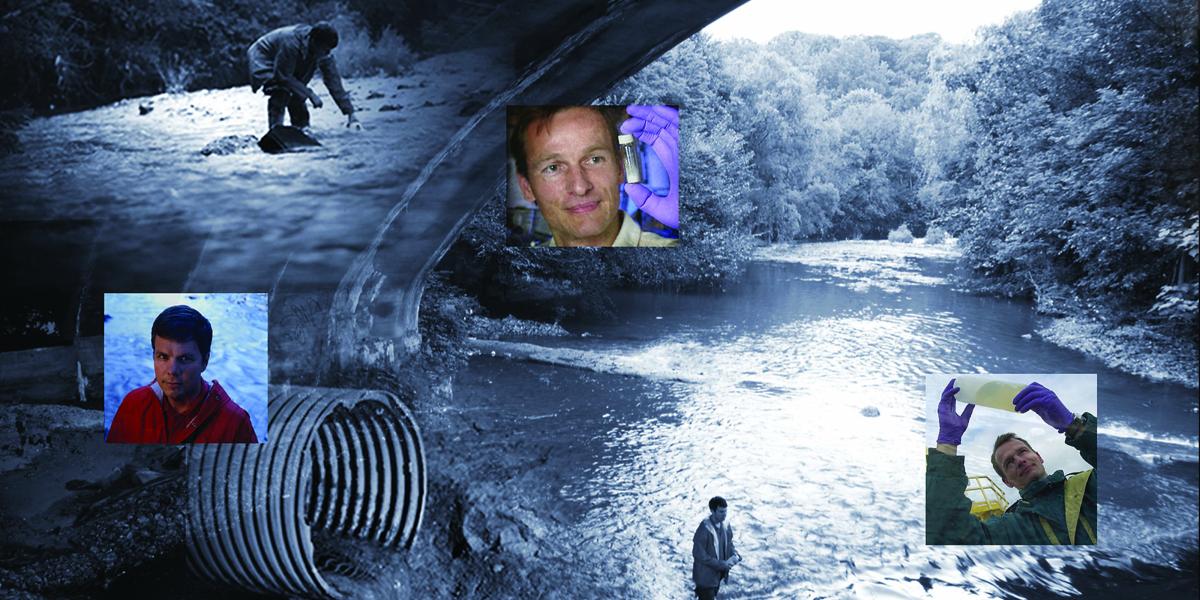A Sewer Runs Through It
What you can't see can hurt you
When they examined the water in urban streams emptying into Baltimore's Gwynns Falls, Kellogg Schwab and Rolf Halden made an alarming discovery that may have implications for many U.S. cities. The water in six of the streams contained fecal coliform and E. coli, and in some places was "chemically indistinguishable" from raw sewage, according to Schwab, associate professor of Environmental Health Sciences (EHS) and Halden, an EHS assistant professor. The pair concluded that the problem was caused, in part, by leakage and overflow from an aging sewer system.
"The wastewater pipes are more than a century old in many places; they were never meant to last that long," says Schwab, PhD. "This is not just a problem in Baltimore, but in every major city in the entire country, though especially the East Coast. The wastewater system has to be updated."
Halden made headlines with a separate study last spring that revealed wastewater treatment plants are no match for the active ingredient in very popular antibacterial soap products. The ingredient—a chemical compound called triclocarban—washes down our drains and accumulates in municipal sludge, which later is spread as fertilizer on farm fields. Whether triclocarban migrates from the sludge into the growing crops and later, into our food supply, is still under study.
"Triclocarban is an example of an ingredient that is very useful in one arena—cleaning—but has the potential to be toxic in another, completely unintended way," says Halden, PhD. "There's an irony at work here, in that something we manufacture and use to protect our health may have serious and negative consequences to our health in the end. We just don't know yet."
